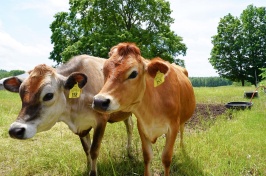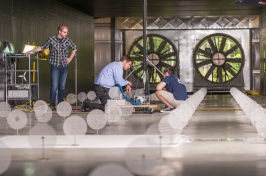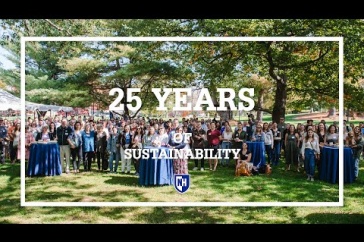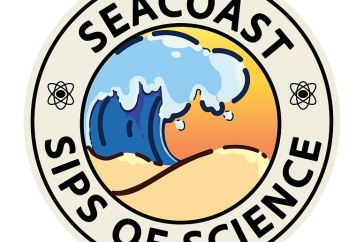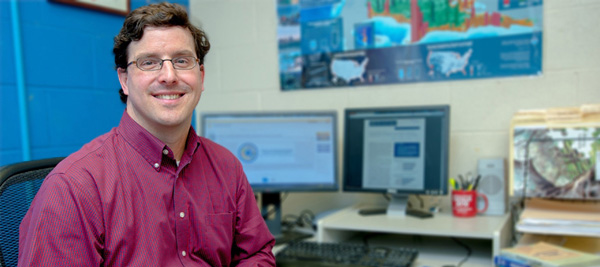
“There isn’t an environmental issue that isn’t a people issue,” contends sociologist Tom Safford.
That’s a critical point for this associate professor whose research focuses on the social aspects of environmental issues, particularly in coastal areas. While other scientists are measuring algal blooms, fecal coliform, or water runoff, Safford is measuring people’s perceptions.
Safford is one of several social scientists on a team of researchers studying the coastal ecosystem in Maine and New Hampshire. Funded by a $6 million National Science Foundation (NSF) grant, the three-year project investigates factors that affect the health of the coast. The team is assessing natural processes and human activity that cause bacterial outbreaks, beach erosion, and other ecosystem threats. Equally important is how those threats are perceived by decision-makers, the public, and other stakeholders, and how scientific data is used to determine such actions as beach or shellfish bed closures.
Given the substantial coastal tourism economy in New Hampshire and Maine — estimated at $400 million annually — as well as the importance of coastal resources to fishermen and women, some of the region’s most financially vulnerable citizens, Safford’s research could play a crucial role in sustaining the coastal economy far into the future.
The sociological data collected in the NSF study will clarify the human context of biological and chemical processes.
“Sociology provides a baseline understanding of people's perceptions and their beliefs and how different social factors might influence those beliefs,” says Safford.
In studies he’s conducted elsewhere — Alaska and Washington’s Puget Sound among them — Safford has found that key stakeholders often assess problems and make decisions based on misperceptions and incomplete information. Even when scientific data is available, it’s not always considered credible. That’s when sociological data can be useful.
Knowing what the public thinks can help policy makers understand what interventions might be widely supported, such as new regulations, tax incentives for businesses, or tax breaks for land conservation. Knowing what fisheries workers think can help resource managers understand what the real or perceived effects of their decisions are. Is a shellfish bed closure seen as a necessity or a political maneuver? What are the effects in terms of lost income, higher prices, or diminished food sources? Decision-makers themselves must understand the assumptions they make when weighing options. One widely held belief is that actions that mitigate environmental impacts have negative economic effects.
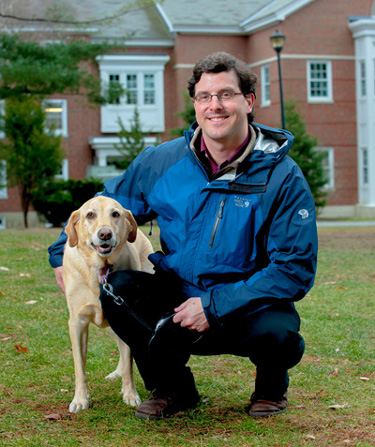
Tom Safford can be seen frequently around campus walking his long-time companion, Riley.
“People often pose the economics against the environment,” says Safford. “But we actually don't know a lot about the economics, so decision-makers are working in a vacuum. They might think: ‘We know that closures are going to have economic impacts. But should I invest in my town — raise taxes to manage our sewage treatment in a better way? How much will that choice impact our beach tourism?’ There's a lot of uncertainty and not a lot of data.”
Sociological data can also be used to conduct education campaigns. In the Puget Sound study, Safford’s team created a public display at the Seattle Aquarium that combined biophysical and social data. In some cases, the data showed a disconnect between what people think a good solution to a coastal problem might be and what the actual negative effects of that solution are.
“Riprap is a good example,” says Safford. “Ripraps are fortifications that people put up on the sides of their piers to control erosion. They have negative environmental impacts, but many people think they are clean and neat and represent how they imagine a very organized waterfront area should appear. People have a sense that something constructed is cleaner and more protective.”
An education campaign might help the public understand the negative impacts of such structures.
Safford is quick to point out that his job isn’t to try to change people’s perceptions or behaviors but to supply the data that will allow those involved in environmental issues to make informed decisions.
It’s a role he wants to play beyond New England. Safford has ties to Brazil and is interested in conducting parallel research in its coastal communities that are experiencing similar strains. Safford, who speaks fluent Portuguese, conducted dissertation research in Brazil and later worked for USAID on social and environmental projects in the northeast part of the country. This past summer, he returned to Brazil to lay the groundwork for research and hopes to get the project underway next year.
“Coastal communities in Brazil are trying to promote economic development, and coastal development is just booming, but they want balance. There are economic benefits in job growth and housing improvements, but there are negative impacts in terms of water quality that are impacting traditional groups, particularly shellfish fishers.”
Much like the NSF project in New Hampshire and Maine, the Brazil project will engage all stakeholders — government agencies, nonprofits, community groups, fishers, etc. — and work with them as partners.
“I'm a big proponent of engaged research,” says Safford. “I think it’s really important, both in the NSF project and in my plan for Brazil, to engage people in the research process not just as the recipients of a bunch of data — a nice little brochure — but actually getting their input into the design of the research.”
Important, too, says Safford, is engaging scientists across disciplines who can bring multiple scholarly perspectives to bear on a problem.
“It’s fantastic to have sociologists and water scientists working together,” says Safford. “It’s a parallel world.”
The New England SusTainability Consortium (NEST) project is managed by the Experimental Program to Stimulate Competitive Research (EPSCoR) at UNH and the University of Maine in partnership with Great Bay Community College, Plymouth State University, and Keene State College in New Hampshire; and the University of Southern Maine, College of the Atlantic, and University of New England in Maine.
Originally published by:
The College Letter, Newsletter of the College of Liberal Arts
-
Written By:
Susan Dumais '88 '02G | College of Liberal Arts






























